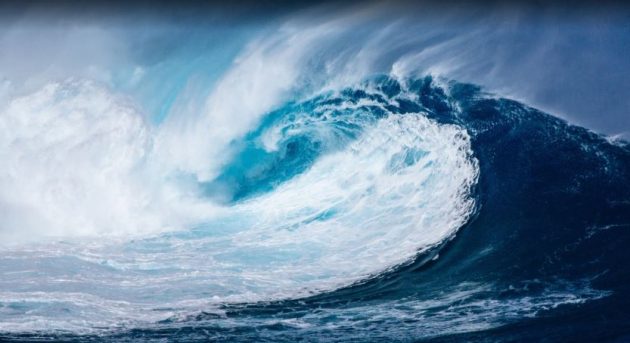Umbrella scheme O-SMART approved
Rs. 1623 crores approved to cover the total cost for the implementation of the O-SMART (Ocean Services, Technology, Observations, Resource Modeling and Science) Umbrella scheme in the time period from 2017-18 to 2019-20. The scheme comprising 16 sub-projects was approved by Prime Minister Shri Narendra Modi led Cabinet Committee on External Affairs to take care of development activities in the ocean like Observations, Science, Services, Technology, and Resources.

Effects:
Fisheries, coastal states, shipping, ports, offshore industry and many more would get benefitted economically with the services provided under this scheme. For instance, the information related to local weather conditions, distribution of fish in the coastal waters, etc sent through mobile every day to around five lakh fishermen communities, helps them in locating areas with high yield, thereby easing their search and also saving on their fuel expenses.
The United Nations’ Sustainable Development Goal-14 targets conservation and sustainable use of the oceans and the marine resources. The issues related to this goal could be better addressed with the implementation of O-SMART.
The different aspects of Blue Economy, which is the sustainable utilization of the ocean resources, could be implemented with the help of the scientific as well as technological background provided by O-SMART scheme. The living, as well as non-living resources from the India seas, can be harnessed with the help of the technologies developed under O-SMART.
Tsunami, Storm surges and other ocean disasters could be more efficiently handled with the O-SMART’’s state-of- art Early Warning Systems.
Particulars:
With the land resources becoming increasingly inadequate to meet the needs, India is also moving towards Blue Economy for which a lot of information on the ocean sciences, more technological developments and services would be required. Accomplishing this would require implementation of many multidisciplinary schemes in the ocean sector.
Hence umbrella O-SMART is proposed by the ministry wherein the current schemes would be included in a focused manner. The continuation of the marine biodiversity and the coastal research activities which are necessary for achieving the Sustainable Development Goal-14 is also envisaged under this scheme.
Under this scheme, the technologies and the ocean advisory services that are being offered and enhanced contribute significantly to the development activities of more than 12 sectors. These sectors that include the coastal Indian states and operating in the marine setting add handsomely to the GDP. In addition to the contemporary oceanic disasters warning systems, relentless services are provided to India as well the UNESCO recognized countries of the Indian Ocean.
Deliverables:
Increasing the Oceanic observations and replicating that, arranging Coastal observations to check the pollution in the oceans in 2018, establishing a plant in Kavaratti to convert the Ocean Thermal Energy, establishing half a dozen desalination plants in Lakshadweep, improving the marine services offered to the fishermen, continuing the existing ocean survey and exploration of Minerals and living resources, deep Ocean mining technological advancements –system for deep mining as well as manned submersibles, taking possession of two coastal vehicles for exploring the coastal areas are some of the major outputs expected from this scheme over the next two years.
Backdrop:
With a motive to offer a suite of Ocean information services as well as to encourage leading research and expand the technology for harnessing the resources in the oceans sustainably and to carry out scientific ocean surveys, several multifaceted projects have been undertaken by the ministry in accordance with the Ocean Policy Statement passed in the month of November of 1982.
Several independent institutions like Indian National Centre for Ocean Information Services, National Institute of Ocean Technology, Centre for Marine Living Resources and Ecology, National Centre for Antarctic and Ocean Research and attached offices, National Centre for Coastal Research and other national institutes are helping the Ministry of Earth Sciences (MoES) in pursuing these programs. To offer support for the research activities, the Ministry has acquired many research vessels namely ORV (Oceanographic Research Vessel) SagarKanya, CRV (Coastal Research Vessel) SagarPurvi, Technology Demonstration vessel SagarNidhi, Fisheries and Oceanographic Research Vessel SagarSampada.
Under the different programs, there have been many significant achievements including the awarding of the pioneer status in deep-sea mining and rights provided by ISBA [International Sea Bed Authority] to explore PMN [Poly-Metallic Nodules] from over 75000 sq. km area in the Central Indian Ocean [CIO] as well as 10,000 sq. km in the Indian Ocean to explore another potential mineral- hydrothermal sulfides.
In addition to offering numerous ocean information services to the coastal states, fishermen, navy, coast guard and other marine stakeholders, the services are also being offered to the nearby countries in the Indian Ocean region. Larger ocean spaces are being covered with the extension of India’s ocean-related activities to the Antarctic region from the Arctic region. Through a wide range of Satellite-based and in situ observations, these ocean spaces are monitored.
Contemporary warning systems for various ocean disasters specifically cyclones, tsunami, etc., have been established. The Antarctic Treaty System has been signed and India has joined the CCAMLR (Commission of Conservation of Antarctic Marine Living Resources) to harness the resources.
While some of the technologies to harness the ocean resources like the low-temperature thermal desalination for islands, have matured and are functional, several other technologies are at different stages. Furthermore, the health of the Indian coastal waters, the marine ecosystem and the shoreline changes are being scrutinized by the Ministry. The other revolutionary technologies developed to include the Remotely Operated Submersible and soil tester, capable of operating in water depths up to 6000 m, shallow bed mining systems.


